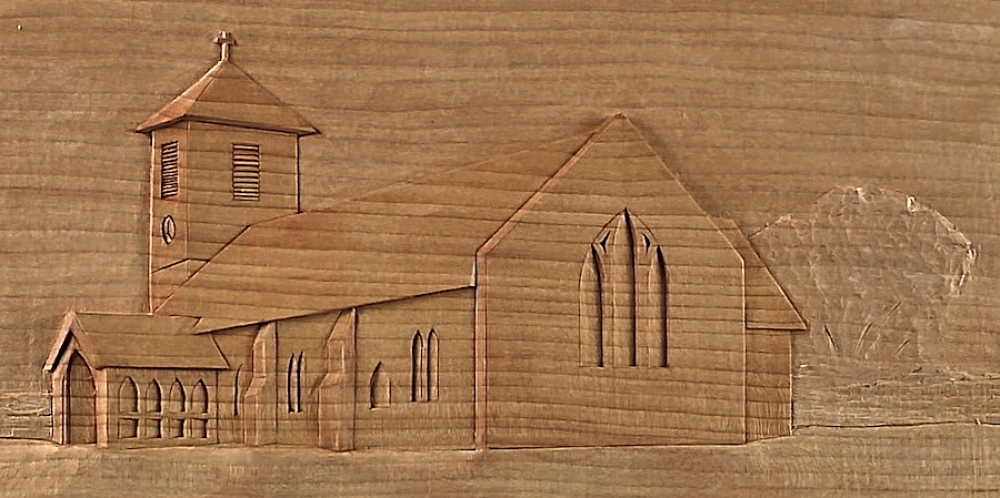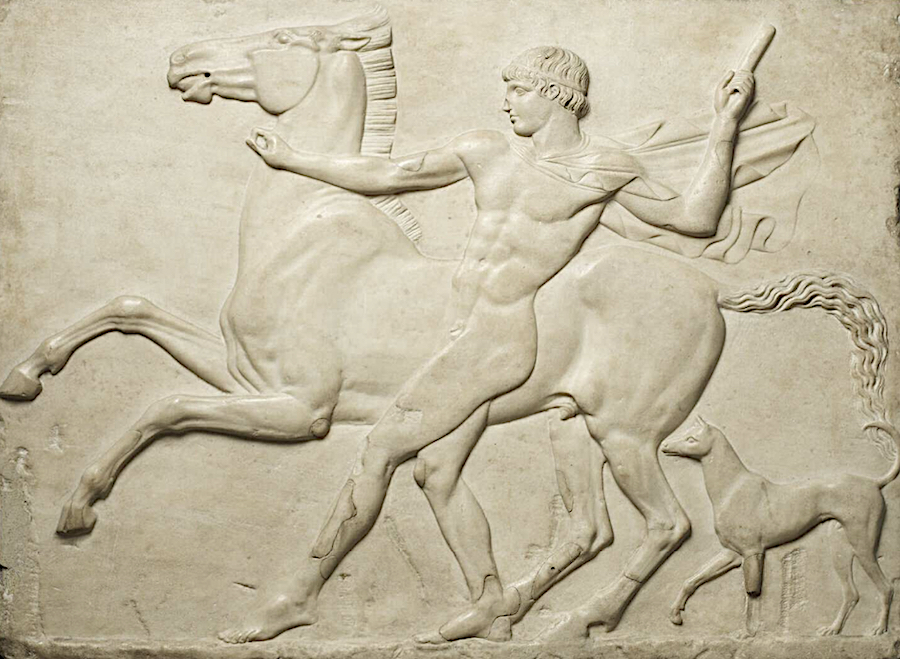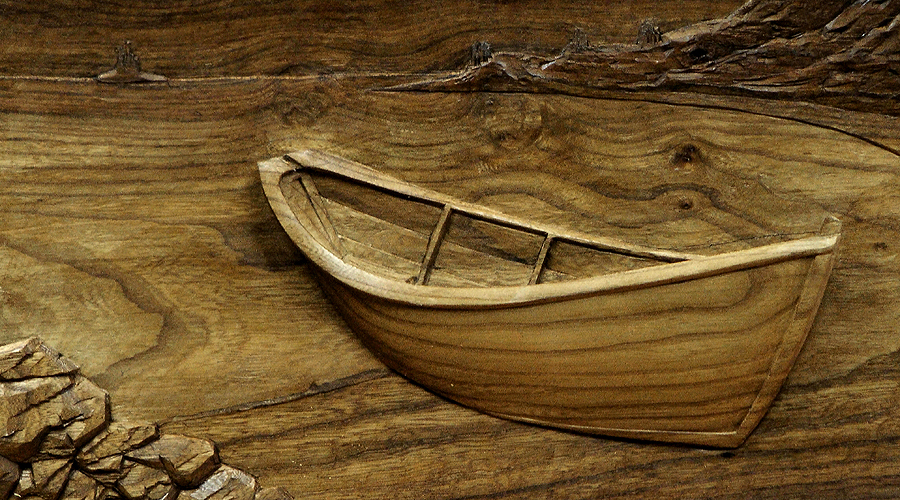Creating a Sense of Depth
16.09.23

The board into which you will carve your relief has a certain, fixed thickness.
But you want to create the illusion of a lot more three-dimensional space, more distance. Depth.
How do you go about it?
In a relief carving, all you have to play with is real depth - the wood thickness. Right?
You’re going to be taking wood away, and you can achieve a lot with that. However, you can achieve even more with the design itself.
Here are some things to play with and think about:
1 Outlines
We can readily tell what it is we are looking at just by its silhouette or profile. Thus, by making the silhouette of a relief subject strong, you have done a lot of the work already: telling the viewer what they are looking at. You can then happily fill in the details.
However, strong outlines also bring the subject forward, towards the viewer. And undercutting, which while giving the subject shadows and drama also accentuates the outline, brings the subject even more to the forefront.
So, a rule: Hard and deep changes of plane (and undercutting) = Nearer the viewer
If you want to show distance, you have to soften this contrast: push the subject back into the wood by reducing the depth, lowering the outline, softening the edge and even merging it with the background.
So, no undercutting and, indeed, almost merging the edges into the background, pushes the subject into the distance.
So, this time: Soft and shallow changes of plane (and no undercutting) = Further away
Greek and Roman carvers knew these principals well.
Here's a Roman relief in marble, found by Hadrian's Wall. You can see it in the British Museum. Look at the way the carver worked the depth:
2 Overlapping
If something is behind something else, it’s farther away - yes?
Before the Renaissance perfected the rules of perspective, overlapping and layering of objects was one of the main ways to show distance.
3 Size
If something next to another something is smaller, it’s very likely to be farther away - yes?
Before perspective arrived on the scene, the Egyptians happily made the size of their figures relative to their social value. So pharaoh, big; slave, small. But you don’t want to do that!
4 Horizon
As objects get smaller and farther away, they approach the horizon.
Think of a boat. It gets smaller, and ‘lighter’ as it sails away, eventually disappearing over the edge of the world. So where you position objects also plays with our sense of distance.
5 Perspective
Perspective is a major way of fooling to the viewer’s brain as to what is happening three-dimensionally.
It’s essential you grasp the principles of perspective. There’s a video link below which should help.
6 Tone and Grain
Don't forget that you can sometimes use the figuring in the wood and a little colouring, say by differentiating lighter (wax) or darker (oiled) areas. The Coastal Relief (link below) is a great example of this, and the other points in this blog, about gaining depth:
Related Videos:
- Perspective made Simple
- Undercutting example
- Coastal Relief - a great exercise in relief carving depth
- August 2023 - Rules of Undercutting


